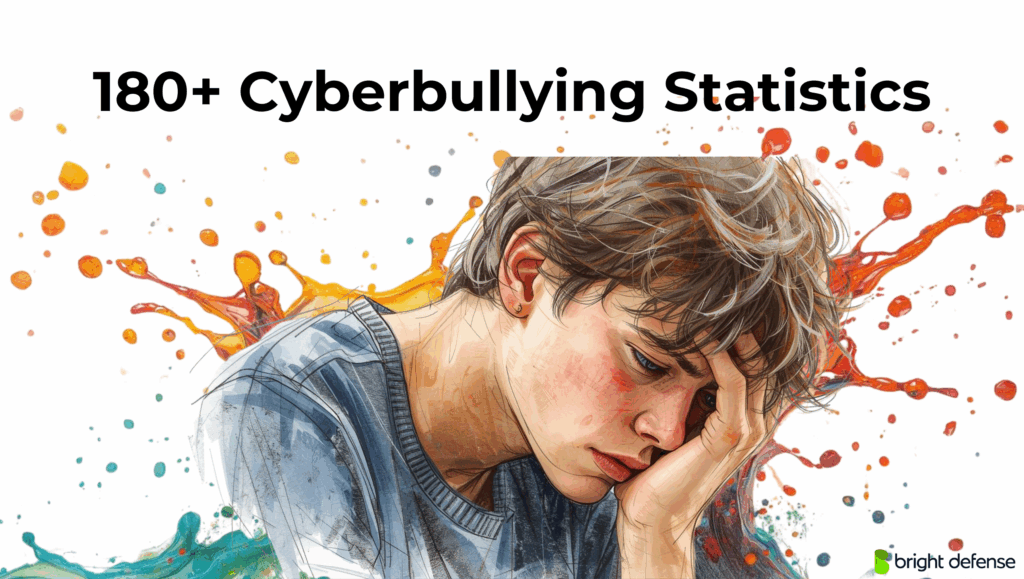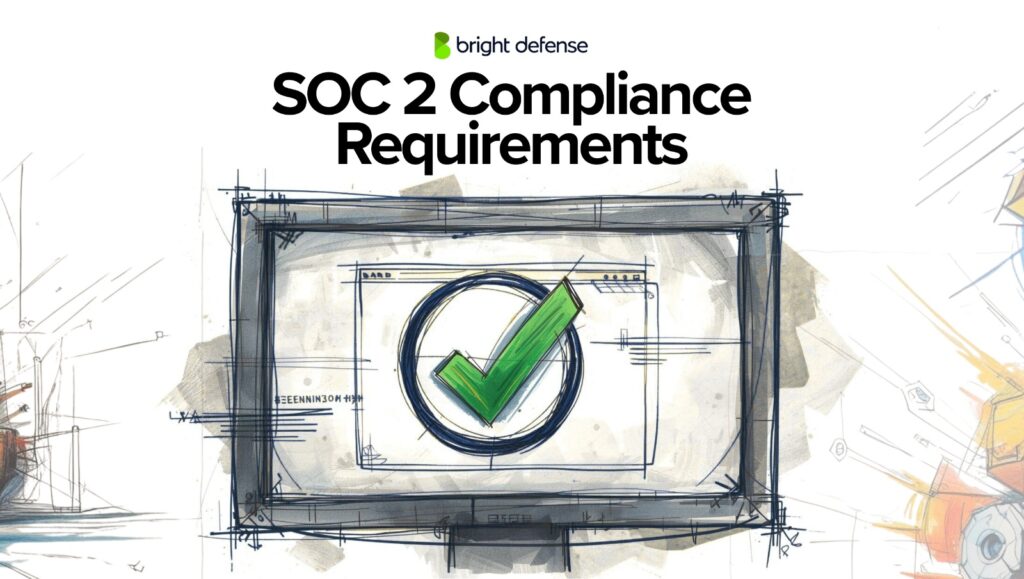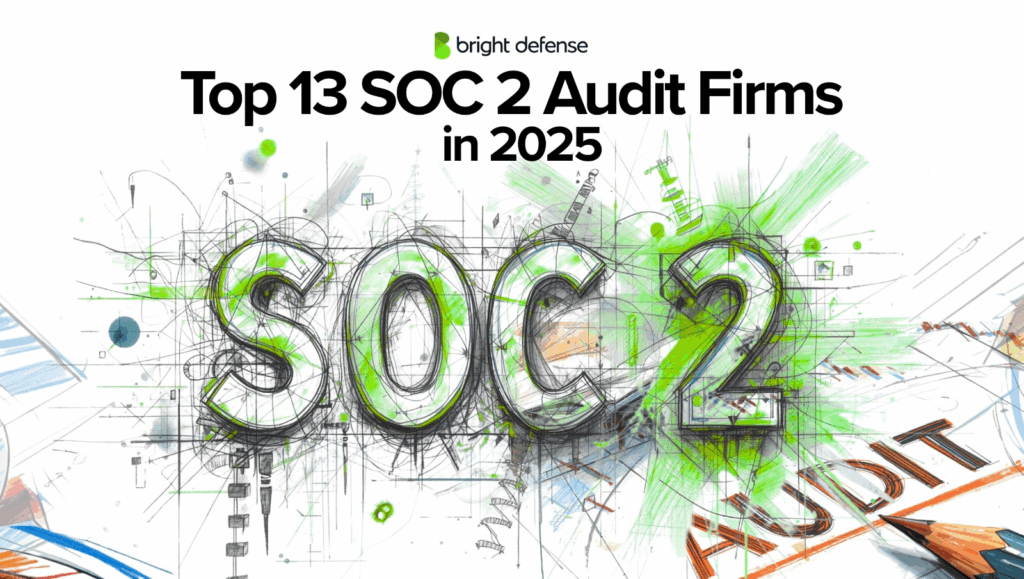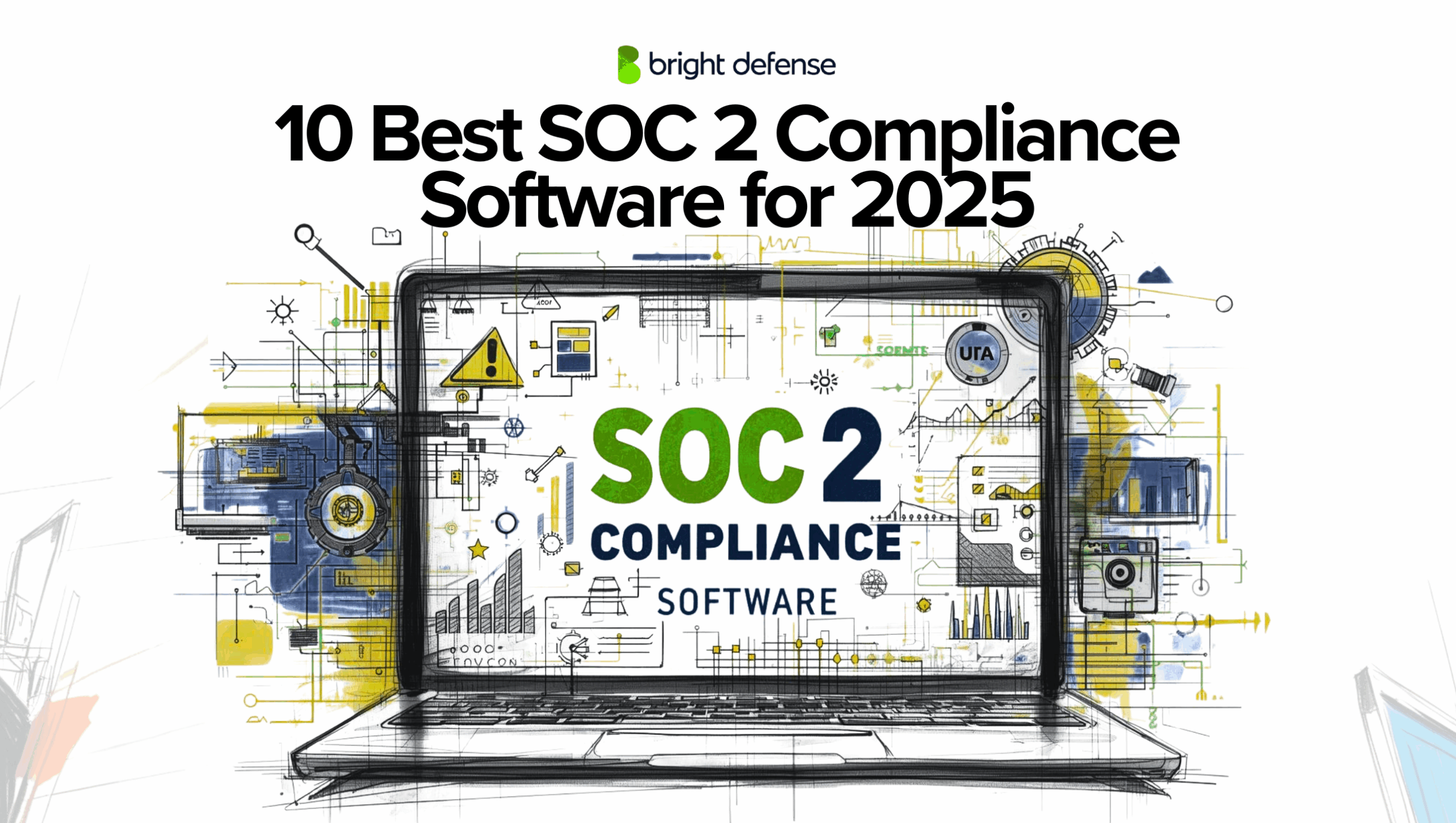
10 Best SOC 2 Compliance Software for 2025
Securing customer data isn’t just smart, it’s a financial safeguard. With the average U.S. data breach now exceeding $10 million and vendor compromise ranking among the top attack vectors, a SOC 2 report has become more than a compliance checkbox. It’s a public proof of trust.
Yet reaching that attestation can be grueling. Teams spend months buried in manual evidence collection, policy updates, and control tracking. SOC 2 compliance software changes that. These platforms automate key tasks, cut audit timelines, and keep your organization audit-ready throughout the year.
In this guide, we review the 10 best SOC 2 compliance software solutions to help you find the right fit for your business, balancing cost, scalability, and simplicity while building lasting customer confidence.
Note: This is not a ranked list. The companies are presented in no particular order, and their placement does not imply superiority over others. All of them have solid reputations and should be able to deliver good results.
Best SOC 2 Compliance Software for 2025
Here’s a focused list of the top 10 SOC 2 compliance software platforms, selected for their features, usability, and support for modern security programs. For a quick comparison, we’ve also included a table below:
| Firm | Year Founded | Founders / Leaders | Headquarters | Key Attributes |
| Prescient Security | 2018 | Fabrice Mouret, Sammy Chowdhury | New York, NY | Risk based audits, 25 plus frameworks, CREST and CSA STAR certified, cloud native focus, AI supported testing, global team with 200 plus staff |
| Johanson Group LLP | 2014 | Stewart Riley; partners Tom Miller, Steven Miller, Ryan McBride | Colorado Springs, CO | Boutique CPA auditor, direct access to auditors, fast 4 to 6 week SOC 2 delivery, multi framework support |
| Sensiba LLP | 1977 | Steve San Filippo; led by CEO John D. Sensiba | San Ramon, CA | Top 100 CPA firm, B Corp, fixed fee pricing, AI assisted audits, strong automation tool experience, fast 30 day report cycles |
| Zero Day CPA | Early 2020s | Lance Samona | West Bloomfield, MI | SOC plus HIPAA focus, flexible remote or onsite audits, customizable Type I, II, and II plus engagements, transparent communication |
| Insight Assurance | 2019 | Jesus Jimenez, Felipe Saboya | Tampa, FL | Former Big Four leadership, AI driven workflows, 24 plus hour client access, multi framework capability across SOC, ISO, PCI, HIPAA, GDPR, and FedRAMP |
| PwC | 1998 (merger) | Samuel Price, William Cooper, others (legacy founders) | London, UK and New York, NY | Big Four scale, SOC 2 plus program, SECO multi attestation coordination, sector specific SOC reporting |
| BARR Advisory | 2014 | Brad Thies | Kansas City, MO | Accredited ISO 27001 cert body and SOC auditor, adaptive audit method that cuts client effort, remote first firm, fixed fee pricing |
| A-LIGN | 2009 | Scott Price | Tampa, FL | High volume auditor, A-SCEND audit platform, 31,000 plus audits completed, global offices and 400 plus auditors |
| Schellman & Company | 2002 | Chris Schellman | Tampa, FL | Specialized assessor, fixed fees, direct principal involvement, large SOC practice, quick 3 week draft and 30 day final delivery |
| Baker Tilly | 1931 | Ed Virchow | Chicago, IL | Global top ten CPA firm, SOC readiness and SOC 2 plus, strong multi framework integration, 140 plus country network |
| Linford & Company | 2008 | Homan Lajevardi, Dena Dahlquist | Denver, CO | SOC and HITRUST specialist, Big Four heritage, encrypted collaboration, remote friendly delivery model |
| Control Logics | 2008 | Homan Lajevardi | Tampa, FL | SOC readiness, SOX and ISO offerings, GDPR and CCPA guidance, senior consultants with 15 plus years experience |
| Oread Risk & Advisory | 2015 | Raja Paranjothi, Mihir Acharya | Olathe, KS | SOC specialty, long term relationship driven model, Tentacle tool integration, combined HIPAA, PCI, and ISO assessments |
1. Drata
Drata is an AI-native governance, risk, and compliance (GRC) platform that automates SOC 2 and other framework requirements.
It centralizes governance, risk, and compliance in one system and uses deep integrations with continuous control monitoring to remove manual audit work.
According to G2’s Winter 2025 report, Drata earned eleven Momentum Leader badges and more than 250 other badges, ranking among the most awarded SOC 2 tools of the year.
The company serves over 7,500 customers, and its AI-driven trust management platform supports organizations from startups to global enterprises.
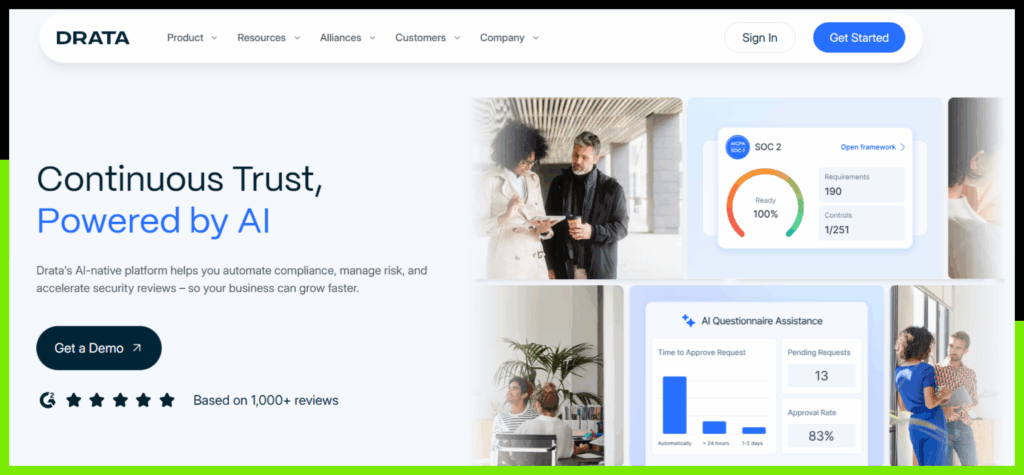
Drata Company Overview
- Company Name: Drata Inc.
- Headquarters: San Diego, California (USA)
- Year Founded: 2020
- Global Presence: Serves over 7,500 customers, including roughly one-third of the Cloud 100
- Website: https://drata.com/
- Founders: Adam Markowitz (CEO), Daniel Marashlian (CTO), and Troy Markowitz
- SOC 2 Cost Range: Pricing is customized, so you’ll need to request a quote. I did some research on Reddit and found that Drata’s SOC 2 platform may usually cost about $7,000 or more per year, without audits. Including audit fees, total SOC 2 expenses can cost $12,000+ depending on scope and audit type. Here’s the Reddit thread that talking about the Drata’s SOC 2 cost so you can give it a look.
Certifications & Accreditations Held by Drata
- SOC 2 Type 2
- SOC 3
- ISO/IEC 27001:2022
- ISO/IEC 27017
- ISO/IEC 27018
- ISO/IEC 42001:2023
- HIPAA
- CCPA
- GDPR
- CISA: Secure-by-Design Pledge
- VPAT
- AWS Qualified Software
- AWS Security Software Competency Partner
(Source: Drata Trust Center)
Awards & Honors
- Earned 11 Momentum Leader badges and 257 other badges in G2’s Winter 2025 report
- Recognized by Forbes as one of America’s Best Startup Employers in 2025
Key SOC 2 Features
- Automated evidence collection: Drata integrates with existing tech stacks to collect evidence and perform continuous control monitoring
- Editable policies: The platform includes more than 20 auditor‑approved security policies with version control
- Pre‑mapped controls & risk assessments: Built‑in risk assessments, pre‑mapped controls and automated asset inventory help teams prepare for audits
- Vendor and employee management: Centralized vendor security questionnaires and built‑in security training ensure that both third‑party vendors and employees meet policy requirements
- Endpoint monitoring & control library: Built‑in endpoint monitoring collects configuration evidence, while a control library lets teams use Drata’s controls or create custom ones
Other Features
- AI‑native trust management: Drata’s platform uses AI to centralize governance, risk, compliance and assurance, aiming to transform GRC from a defensive necessity to a proactive business driver
- Integrations: The platform connects to cloud providers, identity platforms, code repositories, HR systems and ticketing tools for automated evidence collection and continuous monitoring. Drata lists numerous integrations on its website.
- Real‑time security reports: Users can generate shareable reports on security posture to satisfy due diligence requests
Pros
- Extensive framework coverage, including SOC 2 and emerging standards
- Automated evidence collection and continuous monitoring reduce manual workload
- A large library of pre‑built controls and policies speeds audit preparation
- Unified interface and AI‑driven workflows create a single source of truth
- Access to compliance experts via support and live chat
Cons
- Initial setup can be complex due to the breadth of features (according to some user reviews).
2. Vanta
Vanta is a compliance and trust management platform founded in 2018 that centralizes security and privacy workflows.
It connects with over 375 services and performs more than 1,200 automated tests each hour to monitor SOC 2 controls across 35+ frameworks.
The platform includes pre-built policy templates, and security training, risk assessments.
Vanta also incorporates AI-driven tools such as a trust center and chatbot for efficient evidence gathering and communication.
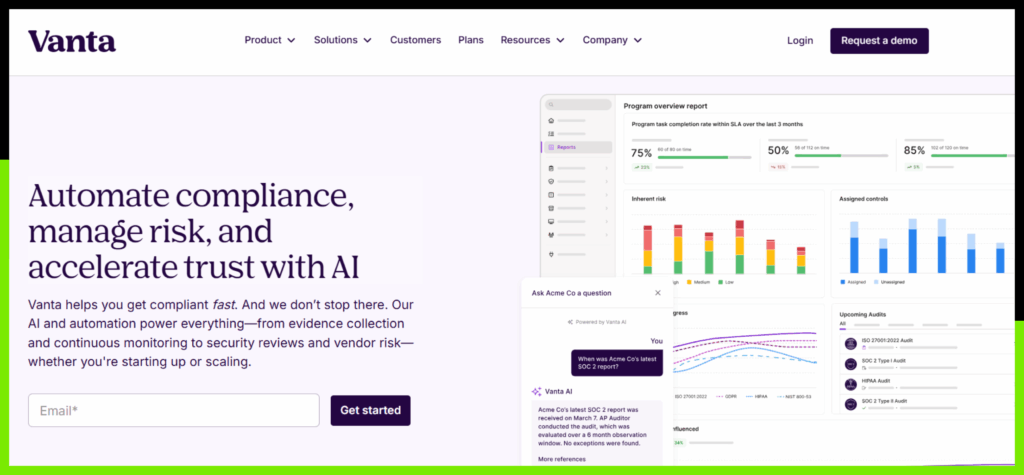
Vanta Company overview
- Company Name: Vanta Inc.
- Headquarters: San Francisco, California (USA)
- Year Founded: 2018
- Global Presence: Has a worldwide customer base
- Website: https://www.vanta.com/
- Founders: Christina Cacioppo (CEO & Founder)
- SOC 2 Cost Range: Vanta’s cost for a SOC 2 compliance platform typically starts around $10,000 per year for smaller companies and can reach $50,000 to $80,000 or more annually for larger businesses. You can reach out to them if you want to know the exact pricing as it will vary
Certifications & Accreditations Held by Vanta
- SOC 2 Type II
- FedRAMP 20x
- ISO 27001:2022
- ISO/IEC 42001:2023
- ISO 27701
- ISO 27017
- ISO 27018
- GDPR
- CCPA
- Trusted Cloud Provider (CSA)
- AWS Security Competency
- PCI DSS 4.0.
(Source: Vanta Trust Center)
Awards & Honors
- Vanta has received several major recognitions, including placement on the Forbes Cloud 100 in 2023, 2024, and 2025.
- Vanta won the 2025 TechForward Award for Security Tech GRC, ranked #94 on G2’s Best Software Companies list, and appeared on the 2024 Fortune Cyber 60.
Key SOC 2 features
- Automated Evidence Collection: Integrates with over 375 cloud, identity, endpoint, and ticketing systems to automate evidence collection
- Continuous Control Testing: Runs more than 1,200 automated hourly tests across frameworks to provide ongoing assurance
- Policy Templates and Security Training: Offers pre-built policy templates, user access reviews, security awareness training, and risk assessments
- Vendor and Vulnerability Management: Provides vendor security reviews, vulnerability management tools, and background checks
- Support and Guidance: Startups receive help from customer success and GRC experts, along with a 24/7 chatbot for common questions
Other features
- AI-Enabled Trust Center: Displays real-time security status for customers and stakeholders and includes an AI chatbot for quick responses
- Flexible Packaging: Offers packages for startups and larger enterprises, with optional partnerships for auditors and managed service providers
- Fair, Transparent Pricing: Publishes support metrics and provides flexible contracts
Pros
- Broad framework coverage with extensive integrations
- Hourly tests and continuous monitoring reduce audit preparation time
- Policy templates, risk assessments, and vendor management reduce complexity
- Strong focus on startups with customer success resources and discounts
Cons
- Pricing can be high for small teams; some features may require higher‑tier packages.
3. Secureframe
Secureframe is a compliance automation platform founded in 2020. It condenses over 200 controls into a guided process that automates policy creation, employee training, cloud security, and risk management.
The platform connects with more than 150 systems for automated control testing and evidence collection. It supports over 40 frameworks with continuous monitoring and dedicated auditor assistance.
Secureframe has raised about $79 million and operates hubs in San Francisco, New York, Austin, Denver, Toronto, and London. Co-founders Shrav Mehta and Natasja Nielsen built it to simplify SOC 2 compliance.
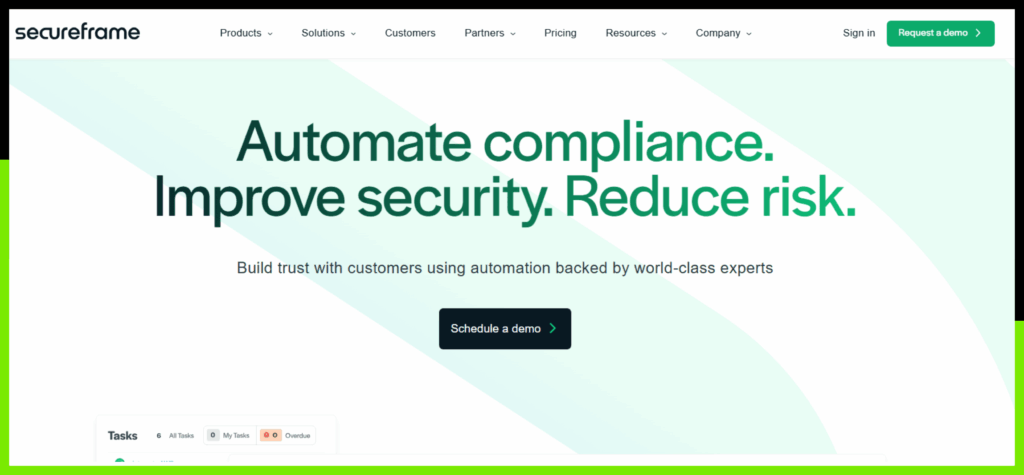
Secureframe Company Overview
- Headquarters: San Francisco, California (USA)
- Year Founded: 2020
- Global Presence: Hubs in San Francisco, New York, Austin, Denver, Toronto, and London
- Website: https://secureframe.com/
- Founders: Shrav Mehta and Natasja Nielsen
- SOC 2 Cost Range: SOC 2 Type 1 audits usually cost between $5,000 and $20,000, while Type 2 audits range from $7,000 to $150,000.
Certifications & Accreditations Held by Secureframe
- SOC 2 Type II
- ISO/IEC 27001:2022
- FedRAMP
- CMMC Level 2
- TX-RAMP
- GDPR
- CPRA
(Source: Secureframe Trust Center)
Awards & Honors
- Named a 2024 winner of the G2 Best Software Awards, in the “Highest Satisfaction Products” list.
- Recognized as a finalist in the 2025 SC Awards in the “Best Compliance Solution” category.
- Winner of the “Hottest Compliance” award in the 2025 Global InfoSec Awards.
- Included on Forbes’ 2025 list of “America’s Best Startup Employers.”
Key SOC 2 Features
- Condensed control framework: Secureframe simplifies SOC 2 readiness by condensing more than 200 controls into a clear set of steps
- Automated evidence collection: The platform automatically collects data through integrations with more than 150 systems.
- Continuous monitoring: Real‑time monitoring of cloud infrastructure and controls ensures constant readiness.
- Dedicated audit support: Secureframe coordinates with independent auditors and provides audit-ready documentation.
- Training and policy management: Built‑in policy templates and employee training modules help enforce compliance.
Other Features
- Risk and vendor management: Secureframe includes vendor due‑diligence workflows, risk scoring and ongoing monitoring to address supply‑chain risks.
- AI‑powered tools: Comply AI and Trust AI automate vendor questionnaires, risk analyses and remediation suggestions.
- Multi‑framework support: The platform supports over 40 frameworks, allowing companies to reuse evidence across audits.
Pros
- Simplifies SOC 2 readiness with condensed control sets and guided workflows
- Automates evidence collection and testing through extensive integrations
- Continuous monitoring and dedicated audit support promote ongoing compliance
- AI-powered tools reduce manual effort in security questionnaires and risk assessments
Cons
- Some users note that customization options for advanced frameworks can be limited.
- Pricing can increase with added frameworks or large environments.
4. AuditBoard
AuditBoard is a connected risk and compliance platform founded in 2014. Originally launched as SOXHUB, it has grown into an AI-powered GRC platform serving over 2,000 customers, including about half of the Fortune 500.
The platform helps enterprises manage, automate, and report on risk and control data without relying on thousands of spreadsheets. It links risks, controls, frameworks, and issues in one system.
AuditBoard’s products include CrossComply for multi-framework compliance, SOXHUB for SOX management, and RiskOversight for enterprise risk. Headquartered in Los Angeles, the company was acquired by Hg for $3 billion in 2024 and continues to operate independently.
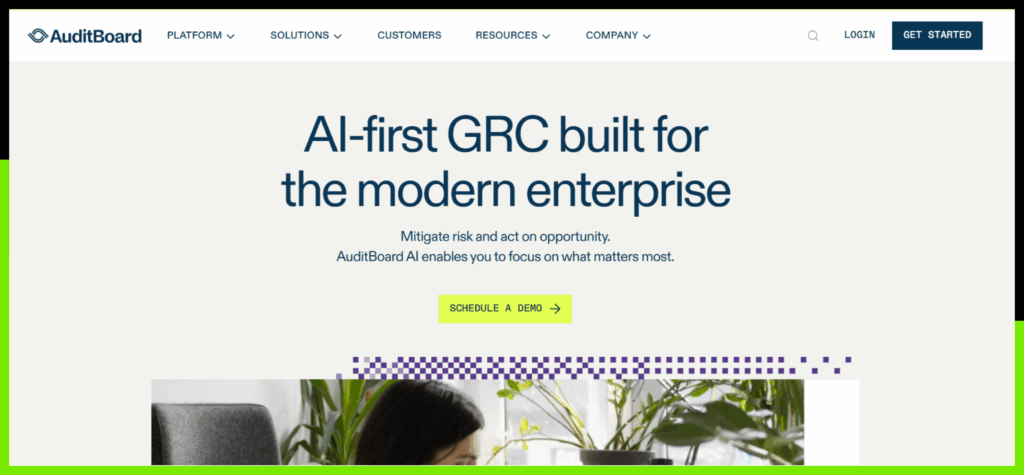
AuditBoard Company Overview
- Company Name: AuditBoard, Inc.
- Headquarters: Los Angeles, California (USA)
- Year Founded: 2014
- Global Presence: Serves more than 2,000 customers and supports over 50% of the Fortune 500
- Website: https://auditboard.com/
- Founders: Daniel Kim and Jay Lee
- SOC 2 Cost Range: AuditBoard reports that SOC 2 Type 1 audits cost $10,000–$60,000, while Type 2 audits range from $30,000–$100,000, depending on company size.
Certifications & Accreditations Held by AuditBoard
- SOC 2 Type II
- SOC 1 Type II
- CCPA
- GDPR
- HECVAT
- CSA STAR
- HIPAA
- ISO 27001
- TX-RAMP
- VPAT 508
(Source: AuditBoard Trust Center)
Awards & Honors
- The 2024 Stratus Award for Cloud Computing – presented by the Business Intelligence Group for excellence in cloud solutions.
- Named to G2’s 2025 Best Software Awards – Top 50 Best Governance, Risk & Compliance Software Products list.
- Launched and awarded its own 2025 “Connector Awards” recognizing customers and leaders in audit, risk and InfoSec.
Key SOC 2 Features
- Centralize Compliance: Unifies compliance across every entity and framework (SOC 2, ISO 27001, NIST CSF, etc.) in one platform
- AI-Powered Gap Assessments & Evidence Collection: Uses AI to identify gaps, map controls, and collect evidence
- Out-of-the-Box Reporting: Configurable reports turn risk and compliance data into actionable insights
- Continuous Compliance: Offers continuous monitoring templates for common IT controls to maintain real-time visibility
- Multi-Framework Optimization: Imports multiple frameworks and reuses shared controls and evidence to reduce redundant work
Other Features
- Connected Risk Approach: Connects risks, controls, frameworks, and issues to promote collaboration across audit, risk, and compliance teams
- Analytics: Drag-and-drop reporting and data visualization tools help teams identify risks and support decisions
- Domain-Trained AI: Provides AI capabilities tuned for risk and compliance, enabling automated tasks and insights
- Broad Product Suite: Includes SOXHUB (SOX management), OpsAudit (internal audit), CrossComply (compliance), RiskOversight (risk management), TPRM (third-party risk), and ESG modules
Pros
- Comprehensive framework support with a large control library and over 200 integrations
- AI-powered gap assessments, evidence collection, and analytics reduce manual work
- Continuous compliance and multi-framework optimization improve audit readiness
- Recognized industry leader with numerous awards and strong adoption among large enterprises
Cons
- Product complexity and pricing may be challenging for small teams.
- Implementation often requires significant configuration and user training.
5. Scrut Automation
Scrut Automation offers an integrated governance, risk, and compliance platform supporting over sixty frameworks. Built to address SOC 2 challenges, it streamlines compliance with automated evidence collection, real-time control monitoring, and more than 100 pre-built policies.
The platform features single-window SOC 2 management and 80+ integrations. Serving over 1,700 customers globally, Scrut has been recognized as a leading VC-backed cybersecurity company with a 4.9/5 G2 rating.
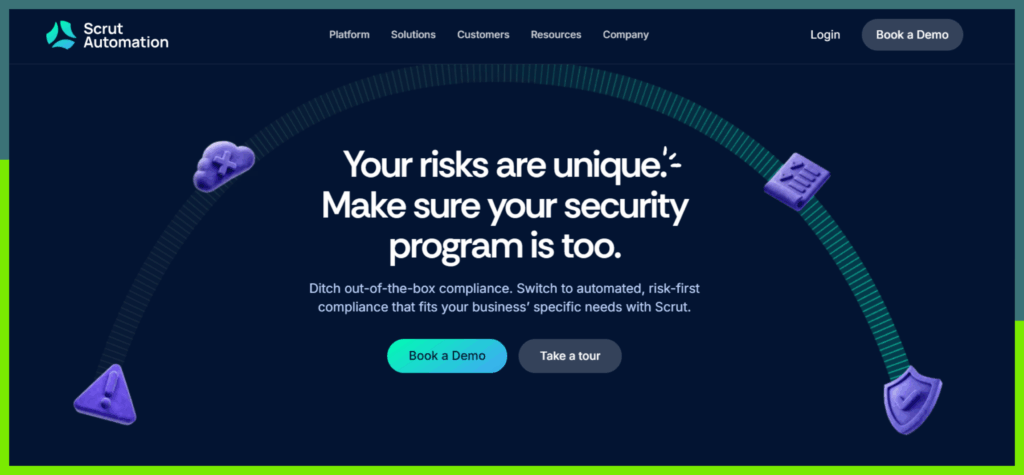
Scrut Automation Company Overview
- Company Name: Scrut Automation (Scrut Cloud Security Inc.)
- Headquarters: Based in India with offices serving over 65 countries
- Year Founded: 2021 (launched after the founders’ previous startup)
- Global Presence: Over 1,700 customers in more than 65 countries and partnerships with 75+ service providers
- Website: scrut.io
- Founders: Aayush Ghosh Choudhury (CEO), Jayesh Gadewar (CTO), and Kush Kaushik
- SOC 2 Cost Range: Pricing is flexible; all core features are included, with optional services and audits affecting the final cost
Certifications & Accreditations Held by Scrut Automation
- ISO/IEC 42001:2023 (Artificial Intelligence Management Systems)
- ISO/IEC 27001 (Information Security Management System) – associated with readiness and compliance support.
Awards & Honors
- Recognised as one of the Top 50 Best GRC Software in G2’s 2025 Best Software Awards.
- Earned 10 Momentum Leader Awards in G2’s Fall 2024 report, alongside 5 Leader awards and 224 badges.
- Co-founder Jayesh Gadewar was named to Forbes 30 Under 30 Asia 2023.
Key SOC 2 Features
- Single-Window Management: Allows teams to manage all SOC 2 tasks like policy creation, evidence collection, control monitoring, and audit preparation, within one interface
- Automated Evidence Collection: Gathers evidence through more than 80 integrations covering cloud services, HR systems, and ticketing tools, reducing manual effort by 80%
- Real-Time Control Monitoring: Provides dashboards and configurable alerts to track control effectiveness and detect deviations
- Risk Management: Conducts end-to-end risk assessments with risk scoring, vendor due diligence, and continuous monitoring
- Audit Collaboration: Enables auditors to access evidence directly through the platform and supports faster SOC 2 audits
Other Features
- Compliance workflows: Create, assign and track tasks with built‑in artifact sharing and collaboration across teams
- Vendor and employee compliance: Monitors vendor performance, scores supply chain risks and delivers employee training via built‑in modules
- Trust Vault: A secure portal for sharing audit results and compliance posture with prospects (mentioned on Scrut’s FAQ)
Pros
- Broad framework coverage and pre-built policies make it suitable for diverse regulatory needs
- Extensive integrations and single-window management simplify evidence gathering and monitoring
- Personalized support from in-house compliance experts with over 50 years of experience
- Dashboards provide clear visibility into compliance activities and risk posture
Cons
- Some users report that initial setup is complex due to the platform’s many features
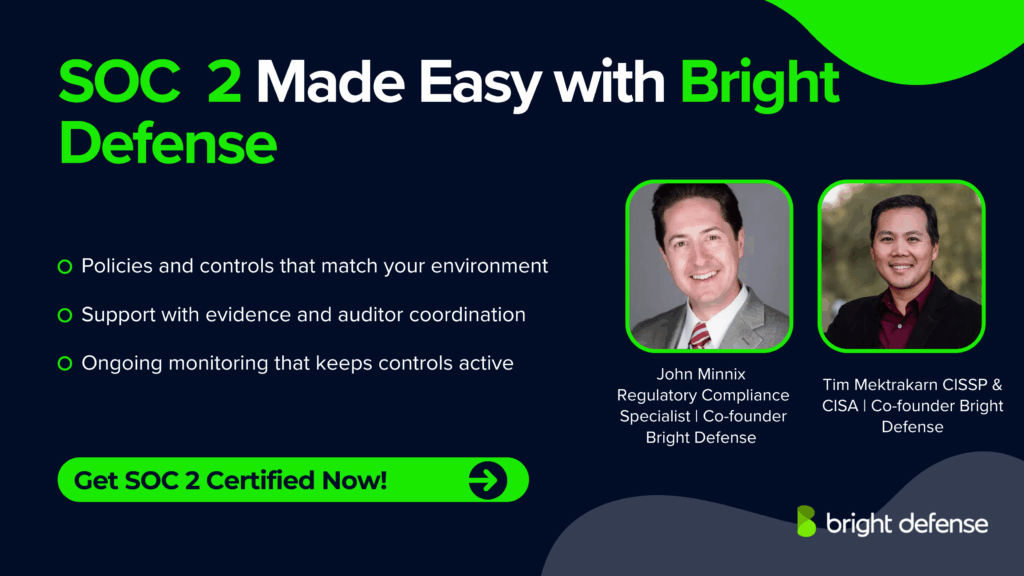
6. Scytale
Scytale is an AI-powered security and compliance hub founded in Tel Aviv in 2020 (CEO & founder: Meiran Galis). The platform handles more than forty security and privacy frameworks, covering tasks such as penetration testing, AI-generated security questionnaires, and Trust Center communications.
Its AI agent, Scy, acts as a compliance co-pilot that evaluates evidence, flags risks, and guides organizations toward continuous audit readiness.
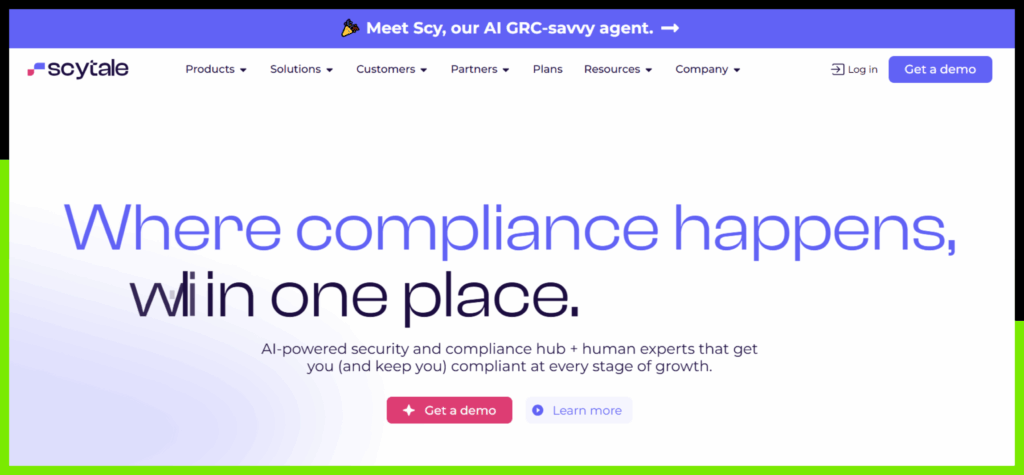
Scytale Company Overview
- Company Name: Scytale AI Ltd.
- Headquarters: Tel Aviv, Israel
- Year Founded: 2020
- Global Presence: 41–60 employees serving customers worldwide
- Website: https://scytale.ai/
- Founder: Meiran Galis
- SOC 2 Cost Range: Custom pricing (quoted individually)
Certifications & Accreditations Held by Scytale
- SOC 2 Type II
- ISO/IEC 27001:2022
- GDPR
- CSA STAR
- ISO 42001
(Source: https://trust.scytale.ai/)
Awards & Honors
- Winner of the G2 2025 “Best Governance, Risk & Compliance (GRC) Software Product” (#12) award.
- Named a Leader in GRC, Security Compliance, and Cloud Security in the G2 Fall 2025 Report, earning multiple badges (Leader, Momentum Leader, Best Relationship, Fastest Implementation) across regions.
- Ranked in the Top 10 of Tekpon’s “Best Compliance Software” list in 2024.
Key SOC 2 Features
- Automated compliance workflows: Scytale automates evidence collection, control monitoring, risk assessments and policy management, reducing manual effort
- AI agent (Scy): Scy reviews evidence, flags risks and provides actionable insights to help teams stay audit‑ready
- Trust Center & questionnaires: Customers can use the Trust Center to share their security posture with prospects and respond to questionnaires using AI
- Multi‑framework support: Allows teams to manage SOC 2, ISO 27001, GDPR and other frameworks in one platform
Other Features
- Penetration testing and vulnerability assessments: Built‑in pen‑testing services and risk registers help identify and address weaknesses
- User access reviews and vendor management: Automates user access reviews, vendor risk scoring and continuous monitoring
- Real‑time reporting: Dashboards and reports show compliance status and upcoming tasks
Pros
- End-to-end automation of compliance tasks and intuitive interface
- AI agent Scy provides proactive insights and reduces manual work
- Supports more than thirty frameworks with centralized workflows
Cons
- Pricing is custom and may be high for smaller organizations
- As a newer company, the platform has fewer integrations than larger competitors.
7. Sprinto
Sprinto is a compliance automation platform founded in 2020 to help tech-driven companies maintain ongoing SOC 2 readiness. Co-founders Girish Redekar and Raghuveer Kancherla created the company after selling their previous recruiting startup.
Sprinto connects with over 160 services and uses AI and GPT models to automate evidence collection and risk management. The company serves more than 1,000 customers across 75 countries, employs about 200 people, and offers guided implementation from compliance experts along with built-in MDM checks to monitor device health.
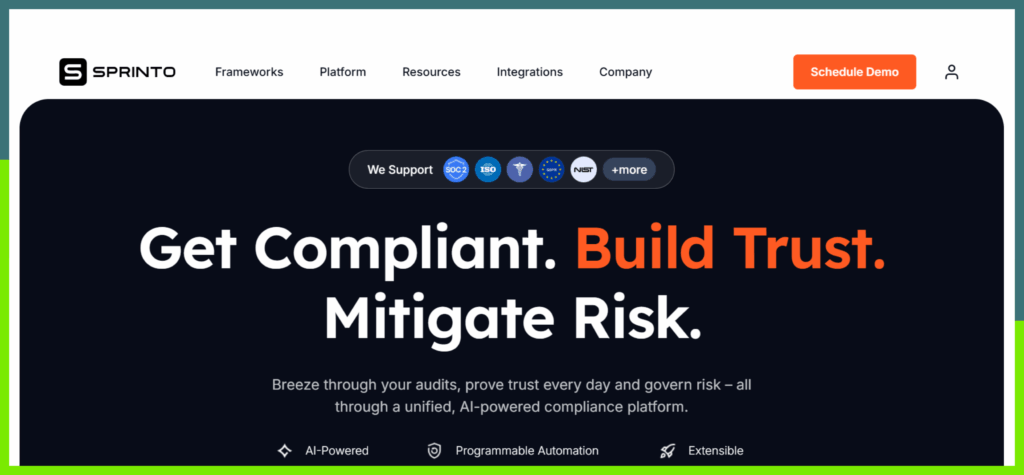
Sprinto Company Overview
- Company Name: Sprinto Technologies Inc.
- Headquarters: San Francisco, California (USA) with an office in Bangalore
- Year Founded: 2020
- Global Presence: Serves over 1,000 customers in 75 countries and has roughly 200 employees
- Website: https://sprinto.com/
- Founders: Girish Redekar and Raghuveer Kancherla
- SOC 2 Cost Range: Pricing is tailored, with separate packages for startups and enterprises
Certifications & Accreditations Held by Sprinto
- SOC 2 Type II
- ISO/IEC 27001
- ISO/IEC 42001:2023
- GRPR
(Source: Sprinto Trust Center)
Awards & Honors
- G2 Best Software Awards 2025
- LinkedIn Top Startups India 2024 Ranked #2 on the national list.
Key SOC 2 Features
- Continuous Compliance: Sprinto runs compliance checks in the background and tracks status history with tiered alerts and automated workflows
- Guided Implementation: Customers receive one-on-one support from compliance experts to set up the program
- Mobile Device Health Checks: Built-in MDM functionality monitors device health and access
- Centralized Dashboard & Templates: Provides a unified dashboard, ready-to-use system descriptions, policy templates, and flexible training modules
- AI and GPT Automation: Uses AI to automate evidence collection, risk assessments, and security questionnaires
Other Features
- Vendor & Vulnerability Management: Includes vendor risk management, vulnerability assessments, access control, security questionnaires, change management, and training
- Audit Readiness: Centralizes evidence, control testing, and risk management in one platform, with auditor-facing dashboards
- Status History & Alerts: Tracks compliance status over time with tiered alerts and notifications for SOC 2 checks
Pros
- Offers more than 160 integrations and supports a wide range of frameworks
- Provides guided onboarding with compliance experts and built-in device health checks
- Serves a global customer base and uses AI to reduce manual tasks
Cons
- Pricing and some features are not openly published
- Smaller organizations may find the broad feature set overwhelming
8. Hyperproof
Hyperproof is a compliance and risk management platform founded in 2018 in Bellevue, United States. It supports more than 118 frameworks and includes over seventy integrations.
The platform centralizes control data, connects controls to risks, and automates workflows across frameworks.
Founder Craig Unger, who previously created workflow automation company Azuqua, built Hyperproof to help organizations maintain continuous compliance. The company has raised $66.5 million and serves mid-sized and enterprise organizations.
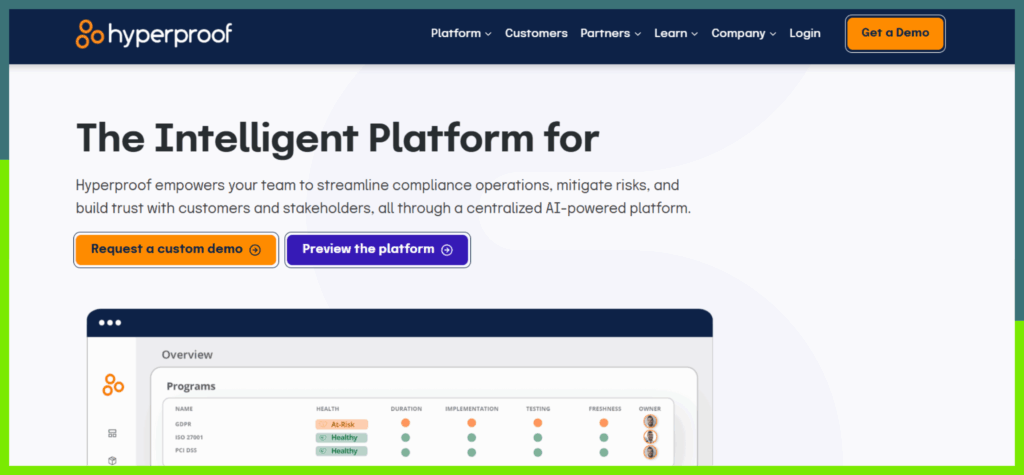
Hyperproof Company Overview
- Name: Hyperproof Inc.
- Headquarters: Bellevue, Washington (USA)
- Year founded: 2018
- Global presence: 101 employees (as of Dec 2022) with customers across multiple industries
- Website: hyperproof.io
- Founder: Craig Unger
- SOC 2 cost range: Starting at approximately $12,000 per year
Certifications & Accreditations Held by Hyperproof
- SOC 2
- GDPR
(Source: Hyperproof)
Awards & Honors
- G2 badges. Spring 2025: 42 badges. Summer and Fall 2025: 56 badges. Fall 2024: 33 badges. Spring 2024: 31 badges. Fall 2023: 37 badges.
- 2025 Capterra Shortlist for Compliance, Risk Management, and HIPAA Compliance. 2025 GetApp Category Leader for the same categories.
- 2025 Software Advice FrontRunner for the same categories.
- 2025 Best Customer Support in the Audit category from Software Advice award.
Key SOC 2 Features
- Program and Control Management: Allows organizations to import and manage multiple frameworks and connect shared controls to eliminate redundancy
- Evidence Collection & Testing: Automates evidence gathering with integrations and uses AI and machine learning to identify overlapping requirements
- Risk Registers & Vendor Management: Maintains registers of internal and vendor risks and ties controls to risk mitigation efforts
- Trust Center & Security Questionnaires: Provides an AI-powered trust center and automated questionnaire response engine, allowing customers to respond to security inquiries efficiently
- Continuous Monitoring: Offers templates for continuous control testing and centralized dashboards
Other Features
- Analytics & Reporting: Customizable reports and dashboards help teams analyze control performance and risk trends
- Integration Ecosystem: Connects with Slack, Jira, OneDrive, GitHub, AWS, Azure, Google Cloud, and other platforms for data import and automation
- Vendor Risk Tracking: Tracks vendor risks and provides workflows for third-party risk assessments
Pros
- Extensive framework coverage and numerous integrations
- AI-assisted control mapping and evidence collection reduce duplication
- Recognized across several industry awards and enjoys high user ratings
- Starting price is listed publicly, providing budget visibility
Cons
- Initial configuration can be complex, and some integrations need further refinement
- Users report that certain features are underdeveloped and updates can be slow
9. Apptega
Apptega offers a governance, risk, and compliance platform that consolidates framework management, risk tracking, audit preparation, and vendor risk management, helping teams manage multiple compliance programs and security processes under one roof.
Its framework cross-mapping feature lets teams reuse evidence across multiple standards, while the Harmony AI engine provides program scoring and control mapping for your security program.
Apptega primarily serves mid-market organizations and managed security providers seeking to manage multiple compliance programs under one roof. It is also a common consideration for fast growing companies.
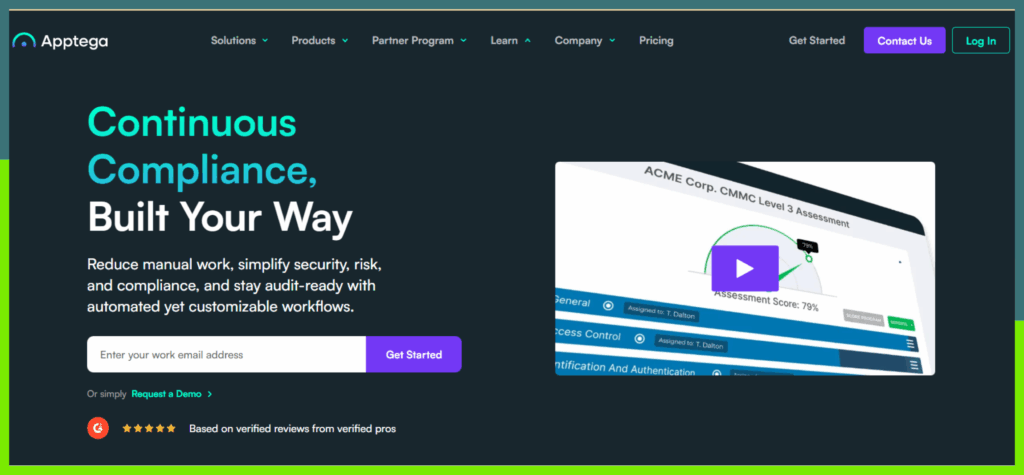
Apptega Company Overview
- Name: Apptega
- Headquarters: Atlanta, Georgia, USA
- Founded: 2018
- Global presence: Serves thousands of organizations and powers 15,000+ compliance programs worldwide
- Website: apptega.com
- Founders: Dave Colesante (CEO), Rahul Bakshi (Chief Product Officer), and other leaders
- SOC 2 Cost Range: Custom annual subscription based on company size, modules, and frameworks
Certifications & Accreditations Held by Apptega
- SOC 2 Type II
- PCI
- NIST CSF
- NIST 800-171
(Source: Apptega Trust Center)
Awards & Honors
- Inc. 5000, 2022
Apptega ranked No. 243 on the Inc. 5000 list of fastest-growing private companies in the United States. The rank appears in the company’s January 24, 2023 news post and its syndicated copy. - Technology Association of Georgia Top 40 Innovative Companies, 2019
TAG named Apptega a Top 40 Innovative Technology Company; recognition announced January 22, 2019. - New World Report | Software & Technology Awards, 2019
Listed as “Best Cybersecurity Management Solution.”
Key SOC 2 Features
- Framework management: Crosswalks controls across 30+ standards, allowing evidence to be provided once for multiple frameworks.
- Audit management: Central hub stores controls and evidence; auditors get read-only access for smoother audits.
- Risk management: Actionable risk register links risks to specific controls, with scoring tools to prioritize remediation.
- Third-party risk management: Sends vendor questionnaires, scores responses, and monitors suppliers within the same platform.
- Harmony AI engine: Offers program scoring, control mapping, and automated policy generation.
- Continuous monitoring: Dashboard provides a comprehensive view of security posture; tasks and reminders keep teams on schedule.
Other Features
- Multi-tenant portal designed for managed service providers.
- Integration library connects with cloud platforms, identity providers, and ticketing systems to automatically collect evidence.
- ROI calculator and benchmarking reports help organizations measure time savings and program performance for potential customers.
Pros
- Cross-mapping saves time across frameworks and provides a single source of truth.
- Strong risk and vendor management modules.
- Users cite helpful support and smooth onboarding.
- AI-driven recommendations assist with program scoring and control alignment.
- Flexible enough for both in-house teams and security service providers.
Cons
- Some customers report that the user interface feels dated or cluttered.
- Initial data loading and configuration can require significant effort.
- Reporting module has limited customization compared with most tools.
- Pricing is not transparent; quotes vary widely by organization size and module selection.
- Support responsiveness and integration breadth can vary by plan.
10. LogicGate (Risk Cloud)
LogicGate’s Risk Cloud offers a modular, no-code GRC platform with more than 40 purpose-built applications. It supports enterprise risk, third-party risk, audit, and cyber programs within a single graph-database system, giving teams control across complex cloud environments.
The platform focuses on workflow flexibility, risk quantification, policy enforcement, and AI-assisted control mapping to maintain strong data security controls.
In 2025, reviews praise its power and customization options but note a learning curve and setup time. LogicGate provides steady support for teams building long-term compliance and security maturity.
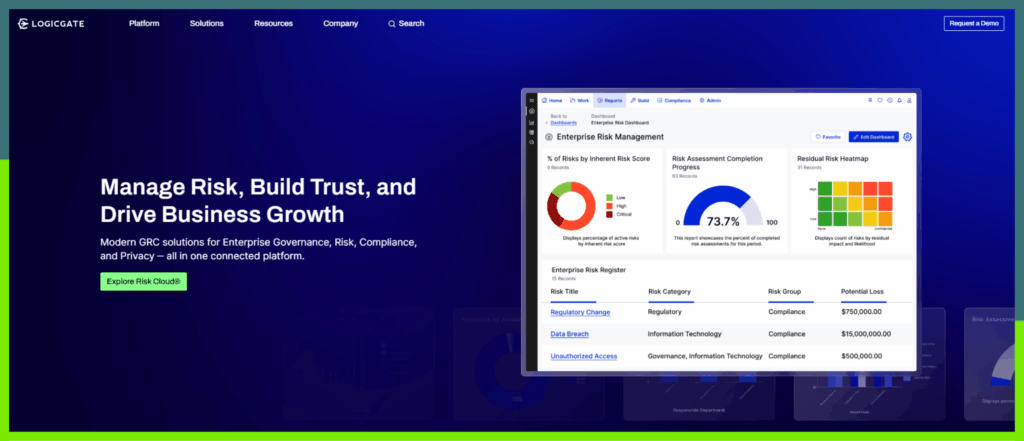
LogicGate Company Overview
- Name: LogicGate, Inc.
- Headquarters: Chicago, Illinois (USA)
- Year founded: 2015
- Global presence: Reports more than 20,000 workflows automated and 35% year-over-year growth in enterprise customers
- Website: www.logicgate.com
- Founders:Matt Kunkel, Jon Siegler and Dan Campbell
- SOC 2 cost range: Modular pricing; only administrators need paid power-user licenses, with separate costs for implementation and integration services
Certifications & Accreditation Held by LogicGate
- SOC 2 Type II
- ISO 27001
- 21 C.F.R. Part 11
- CSA (Cloud Security Alliance)
- EU-US Data Privacy Framework
- VPAT (Voluntary Product Accessibility Template)
- GDPR
- HIPAA
(Source: Logic Trust Center)
Awards & Honors
- 2025 CyberSecurity Breakthrough Awards – Overall Risk Management Solution of the Year.
- The Forrester Wave™, Q4 2023 – Leader in Governance, Risk, and Compliance Platforms
- 2025 FinTech Breakthrough Awards – Best Risk Management Platform
- Inc. 5000 List (Multiple Consecutive Years) – Fastest-Growing Private Company
- 2025 Top Workplaces Awards – Top Workplaces Technology Industry
Key SOC 2 Features
- No-code workflow builder: Users model risks, controls, assets, and issues and automate related workflows.
- Enterprise Risk Management: Connects risks, controls, and initiatives with quantitative modelling for board-level reporting.
- Third-Party Risk Management: Provides vendor questionnaires, risk tiers, and automated reminders.
- Framework mapping & control library: Enables control gap analysis and status tracking across multiple standards, helping meet evolving compliance requirements.
- Policy & procedure management: Centralizes policy lifecycles with attestations to enforce data security controls.
- Internal audit: Supports audit planning, fieldwork management, and secure evidence storage in cloud environments.
Other Features
- Value realization tool calculates ROI and cost-of-ownership metrics.
- Graph-database foundation allows flexible data modelling and relationship mapping.
- Implementation services and GRC experts assist in early stages of the compliance journey.
- Users can add or remove applications based on needs; pricing follows a modular approach.
Pros
- Highly configurable workflows and data models suit complex organizational structures.
- Strong enterprise risk and third-party risk modules.
- Risk quantification brings financial clarity to risk discussions.
- Good integration ecosystem and helpful document generation.
- Clean interface once configured; purpose-built applications cover most GRC domains.
Cons
- Steep learning curve; initial setup often requires dedicated administrators and training.
- Advanced reporting and analytics often need custom configuration.
- Flexibility can lead to over-customization, adding maintenance overhead.
- Evidence collection automation is limited compared to competitors with more automated verification.
- Total cost can rise quickly due to separate module and implementation fees.

How to Choose Quality SOC 2 Software
This guide provides practical advice for security and compliance teams choosing SOC 2 software. It is written from a practitioner’s view and supported by AI to organize and verify details.
1. Define Scope and Constraints
Start with the essentials. Decide whether you need a SOC 2 Type I or Type II report and set a realistic timeline. Clarify which Trust Services Categories apply, security alone or with others like Availability, Confidentiality, or Privacy. Document the systems in scope, the regions involved, and the internal team’s available time. Establish a budget that includes both the software and expected SOC 2 audit process costs.
2. Key Product Capabilities
A SOC 2 platform should automate and simplify evidence collection. Look for:
- Control mapping to SOC 2 criteria, with the ability to cross-reference other frameworks.
- Continuous monitoring that tracks control changes and sends alerts for drift.
- Policy management with versioning, acknowledgment tracking, and ownership assignments.
- Risk and vendor management features for unified oversight.
- Audit readiness tools such as an auditor portal and immutable evidence exports.
- Platform security controls including encryption, role-based access, and logged sessions.
These should function reliably without constant manual input.
3. Additional Useful Features
Extra features can save time and improve visibility. Support for custom frameworks, redaction of production data in evidence, and multi-entity management are valuable. AI-driven policy drafting or evidence suggestions can help but should never replace human review within your security and compliance program.
4. Integration Requirements
Confirm native integrations with the systems already in use:
- Identity: Okta, Entra ID, Google Workspace
- Cloud: AWS, Azure, or GCP
- Code and build: GitHub, GitLab, or Bitbucket
- Device and endpoint: Intune, Jamf, or Kandji
- IT service: Jira or ServiceNow
- HR systems: Workday, BambooHR, or Rippling
Ask the vendor to demonstrate automated evidence collection pulled live from these systems.
5. Auditor Compatibility
The best platforms already work with your audit firm. Ask if your auditor uses the vendor’s portal, request a sample evidence pack, and check customer references from similar SOC 2 Type II projects. This prevents friction at audit time.
6. Platform Security and Privacy
Request assurance documents such as a SOC 2 report, pen test summary, and subprocessor list. Review how the vendor handles encryption, incident response, and data privacy. Data location and retention should be transparent.
7. Usability and Change Management
A practical tool should make task tracking easy. It needs clear ownership fields, due dates, and bulk evidence handling. Built-in help or walkthroughs reduce onboarding time. Ask for a sandbox to verify usability with your real environment.
8. Pricing and Total Cost
Request detailed pricing with no hidden add-ons. Compare costs for the base license, integrations, and extra users. Review renewal terms, data export options, and any fees for auditor access. Pricing packages should be transparent and predictable.
9. Proof-of-Concept Evaluation
Run a short proof-of-concept to validate audit readiness. Connect one cloud account, one repository, and one HR system. Measure success through these results:
- At least 70% of controls auto-checked.
- Two or more policies published with user acknowledgments.
- A vendor review completed in the system.
- Auditor access tested with real evidence and access control logs.
Document results, time spent, and remaining manual steps.
10. Scoring and Comparison
Use a weighted scorecard for fair evaluation. Give higher weight to control automation, integration depth, platform security, and the current compliance posture. Use gap analysis findings to highlight areas that need work. Include smaller weights for usability, support, and total cost. This structured scoring model supports defensible decisions.
11. Red Flags
Avoid tools that rely on screenshots as evidence or manual uploads when APIs exist. Lack of clear pricing, no deletion policy, or forced upgrades to unrelated frameworks are warning signs. Missing policy history, unverified data integrity, or no validation for processing integrity also signal risk.
12. Auditor Handoff
Once a tool is selected, prepare for audit handoff. Share control mappings, sample evidence, and access instructions. Confirm the auditor accepts the platform’s export format. Agree on exception handling and remediation tracking within the system.
Vendor Questionnaire
Ask each vendor:
- Which Trust Services Categories are supported?
- What integrations are available, and how often does data sync?
- How is evidence stored and validated?
- Can you share your SOC 2 report and pen test results?
- What is your incident response process?
- How are exports formatted for evidence and controls?
- What is your average implementation timeline?
- What are your contract terms and renewal policies?
- Can you provide references from recent SOC 2 Type II customers?
- How are access reviews performed and recorded?

FAQs
– Drata: Ideal for tech-savvy startups and growing teams that want a compliance automation platform.
– Vanta: Best for early-stage startups. Fast setup, simple UI.
– Secureframe: Works well for mid-market or teams needing more hands-on support and multiple frameworks.
– Vanta: ~$10K-$50K+ per year base. Add-ons for each framework or integration may raise cost.
– Drata: ~$10K-$40K+ per year. More features included upfront, fewer surprise add-ons.
– Secureframe: ~$15K-$25K per year. Higher starting price, includes guided support.
Note: Auditor fees (~$8K-$15K) are separate, and some vendors offer audit readiness services at extra cost.
– Drata: Strongest real-time control checks with continuous control monitoring and evidence collection.
– Vanta: Good automation but can require more manual checks.
– Secureframe: Emphasizes guidance, less automated than others.
– Vanta: Popular with auditors, clean exports.
– Secureframe: Connects you with familiar auditors, white-glove help.
– Drata: Partner network, strong audit hub, but less focused on auditor pairing. These relationships can speed audit readiness.
– All three: Support AWS, Azure, GCP, Okta, Jira, and HRIS tools.
– Vanta: Broad and easy to set up, but occasional reliability issues.
– Drata: Stable, developer-friendly.
– Secureframe: Most extensive library, strong for complex stacks
A SOC 2 Type I report can be obtained relatively quickly, taking about 2 to 4 months in total, as it only assesses your security controls at a single point in time. A SOC 2 Type II report requires a much longer commitment, typically taking 6 to 12 months because it includes a mandatory 3-to-12-month observation period to prove your controls are operating effectively over time.
– Secureframe: Best for scaling to HIPAA, ISO 27001, etc., and mapping across compliance frameworks.
– Drata: Strong cross-mapping, supports custom frameworks.
– Vanta: Solid for 1-2 frameworks, less efficient with many.
– Drata: Strongest for continuous technical control checks.
– Secureframe: Helps maintain hygiene through structured tasks.
– Type 1: About 1-3 months with any platform.
– Type 2: Add about 3-6 months for observation and audit.
– Total: About 6-9 months from kickoff to Type 2. A brief gap analysis early in the process gives more accurate planning.
– TrustCloud: Free for companies with 20 or fewer employees, good coverage.
– Open-source: Gapps on GitHub, Practical Assurance templates.
– DIY: Google Sheets plus free policy templates (for example, Secureframe kits).
Get In Touch

